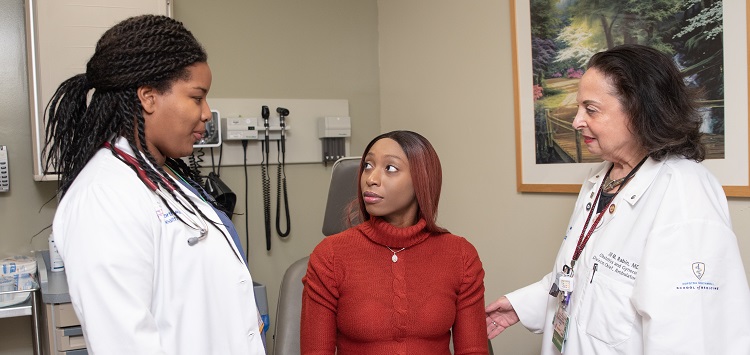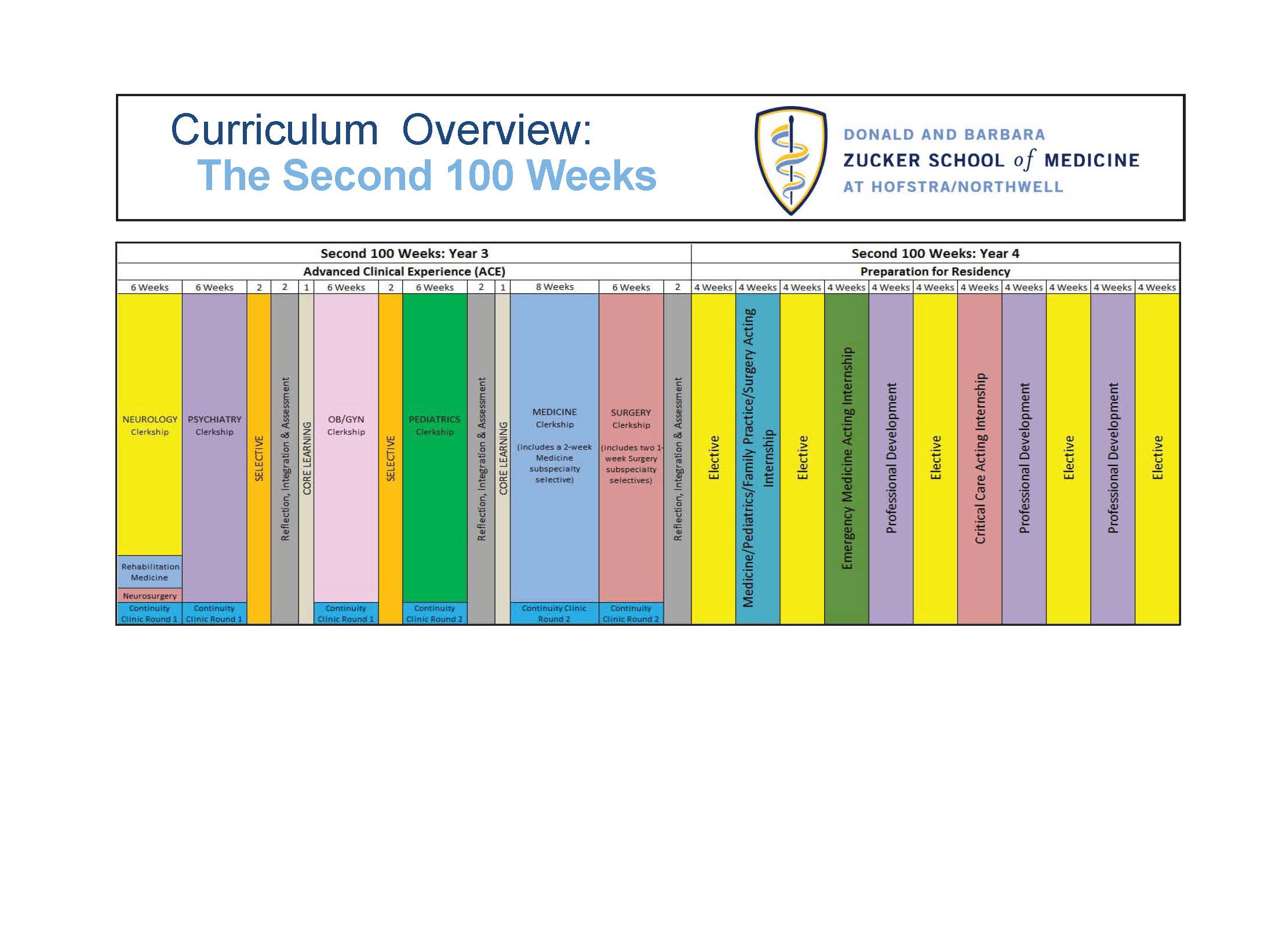Medicine Clerkship
The Medicine clerkship is an 8-week inpatient rotation, with students assigned to one primary inpatient site (NSUH, LIJ, or LHH). Five weeks are spent as a member of the house staff medicine ward team, while two weeks are allotted for a sub-specialty selective of a student's choosing and one week is spent on a night rotation.
On the medicine wards, students follow the house officers' daily schedule including pre-rounds, attending rounds, and most conferences, and adhere to their on-call schedule. Students typically work closely with interns (PGY-1), and follow between two (initially) and four (goal) of the interns' patients. Students are responsible for daily presentations, new patient evaluations, and routine wards work. Additionally, they are encouraged to write daily progress notes as a formative exercise (house officer notes complete the medical record).
- Clerkship Goals
Clerkship Goals
- To learn a comprehensive, as well as a focused, approach to the evaluation and care of the adult medical patient.
- To understand the signs, symptoms, pathophysiology, diagnostic criteria, clinical course and treatment of common disorders of the discipline.
- Understand what conditions in Medicine constitute an emergency and have a basic understanding of diagnostic workup and treatment for those.
- Develop skills in the following areas specific to the expectations for the Internal Medicine clerkship and inclusive of specific experiences within the discipline.
- Integrate logic and problem-solving skills, with an increasing knowledge base in Internal Medicine, to generate a differential diagnosis and use it in the evaluation of a patient's symptoms and findings.
- Clinical Presentations & Procedures
By interacting with patients, student accomplish the following:
- Describe an approach to evaluating a patient with the "clinical presentation"
- Describe the differential diagnosis for a patient presenting with the "clinical presentation"
- Describe the historical features, epidemiology of disease physical exam findings, diagnostic strategies and treatment for the most common diagnoses associated with the "clinical presentation"
- Compare and contrast illness scripts
- Describe prevention strategies for patients presenting with the "clinical presentation"
- For procedures, demonstrate the ability to perform the procedure and to know the indications, contraindications
Clinical Presentations
A: Assist P: Perform- Abdominal Pain
- Acute Kidney Injury
- Altered Mental Status
- Anemia
- Back Pain
- Chest Pain
- Chronic Kidney Disease
- Common Cancer: NOS
- COPD/Obstructive Airways Disease
- Diabetes Mellitus
- Fluid, Electrolyte and Acid-Base Disorders
- Gastrointestinal Bleeding
- Heart Failure
- Liver Disease
- Obesity
- Pain (acute or chronic)
- Pneumonia
- Rheumatologic Disease
- Syncope/pre-syncope/LOC
- Venous Thromboembolism or Pulmonary Embolism or Rule-out PE
- Procedure: Blood Culture
- Procedure: CPR
- Assessment Methods
Assessment Methods
Students are assessed in a variety of ways to generate a grade in the Medicine Clerkship. As a faculty member or resident who is responsible for supervising a student, you will be expected to complete a “Clinical Assessment of Student” form. The questions/anchors can be found on the Second 100 Weeks assessment page.


